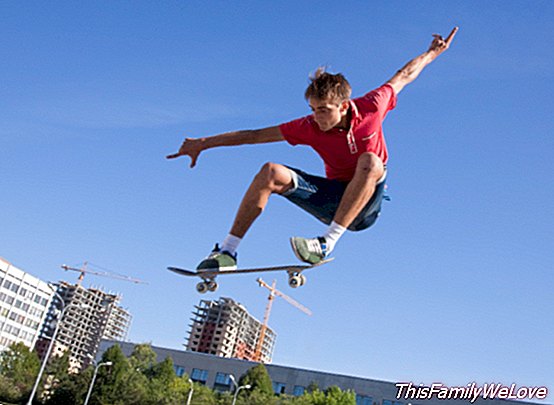The danger of risk in adolescents

 THINKSTOCK
THINKSTOCKThe emotional chaos of adolescence causes a taste for risk, the need to experience novelty and impulsivity, which have their natural sense in the need for self-knowledge and others to achieve personal autonomy. The danger of risk in adolescents it resides in its own brain, in the way of managing dangerous situations and its rapid emotional response.
Why do dangerous situations produce pleasure?
There are reckless actions that would lack explanation if it were not because pleasure is innate due to danger. Bold behaviors are reflected in the brain in an increased concentration of dopamine, a neurotransmitter that places in a kind of drunken state. In moments of risk, the overvaluation of the possibilities increases and increases in such a way that the impulse to look for those situations is felt. The emotional reward for living adventures has advanced man. Throughout the history of humanity, those who risk have taken great advantage of life.
Not all people feel the same fascination with risk; in genes there are peculiarities that define temperament. The risky people have a low level of the protein -monoamine oxidase- that degrades the dopamine, which they more easily look for in the risk that the levels of this molecule rise to the maximum. On the other hand, people who are weak will soon degrade it and experience less the impulse to risky behavior.
The value of risking for people

1. The risk and the children. Children with the situations of play in which they risk and with the search of dangers put their physical limits to the test. They enjoy the positive emotion of danger of climbing the heights, speed, cartwheels, hiding, getting lost, etc., which helps them overcome fears, and overcome themselves.
During childhood the way of reasoning does not go to the heart of the issues. They learn by literal repetition, based on the knowledge of details that they collect in a routine way and memorization. They have to learn from their own experience to assess the risks and they do it well. Family overprotection does not help. It is true that sometimes they get in, without warning, in situations of real danger from which they have to be removed, but the physical damage of the blows and falls is a great teacher of life.
2. Risk and adults. With maturity appears the second style of reasoning that depends above all on intuition and allows to quickly enter the nuclear issues, filtering the essential and leaving aside the details that mislead. In adult life decisions are made from one's own experience, emotions, education and his own conception of the world. When a situation entails risks to health or life, mature people do not begin to deliberate about the degree of risk and the magnitude of the benefits. They decide fast, and unless they are bound by the addiction of the game, they do not expose life or health in a bet.
Adolescents in situations of risk
The stage of adolescence has the task of uniting the component of slow analytical and deliberative reason with the rapid emotional and intuitive component. Reasons of the head and reasons of the heart are mixed when we talk about the myth of the invulnerable adolescent.
1. Learning not easy. The first changes that occur in the adolescent brain occur in the reward system. The system is mismatched because 30% of the receptors for dopamine disappear, so they require very strong stimuli to release as much of this substance.
2. The great emotional response and the poor ability to expand the satisfaction of desires over time, make the temptation to seek immediate reward very strong. Children's experiences are not enough and they bore activities with which they enjoyed before childhood goodbye; They begin to take on new challenges and friendship takes precedence with those of their age.
In parallel, the brain is trained for intuitive, global thinking, and judgment ability. The efficiency of brain functioning requires time to reach the connecting knots of the cables and allow the synchronization of the speed of the information flows that constitute the cognitive-emotional control circuit.
So that adolescence is the moment in which the less successful choices such as early sexuality and drug dependence take place. And, precisely because of the instability of the maturation process, at this stage the atypical early experiences affect the structuring of the brain wiring very intensely.
Natalia López Moratalla. Professor of Biology and Molecular Biomedicine.




